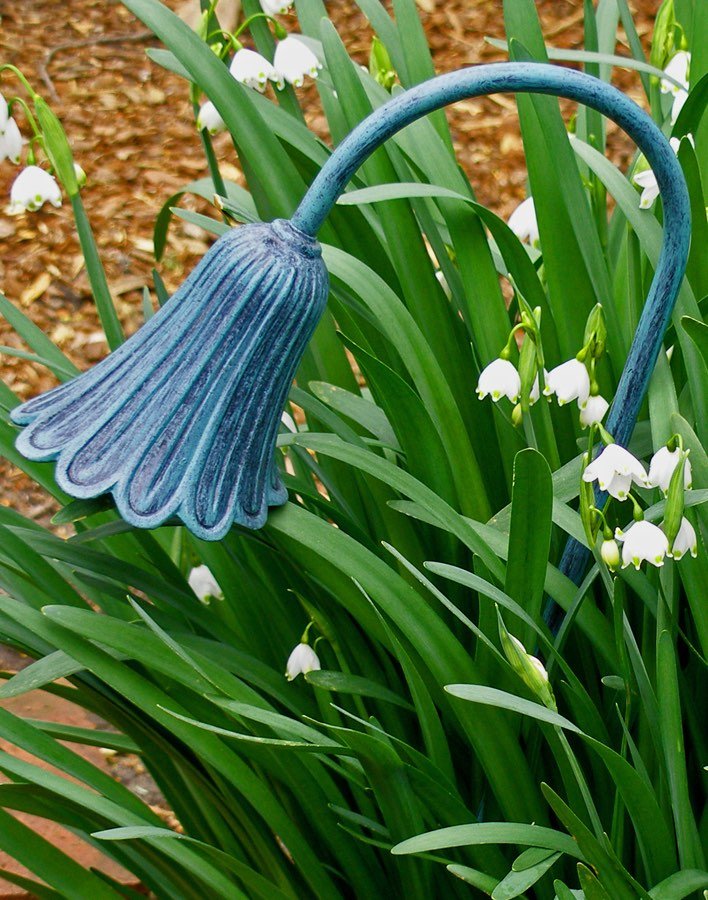Making the best of early sunsets
Twilight time in the garden doesn't have to be gloomy or dangerous.
When Daylight Saving Time was put aside for the winter, folks with day jobs lost opportunities to enjoy after-work colors and textures. And it got dangerous, because after dusk, we can't as easily see where to put our feet, especially when stepping out from the bright lights of the house, or stumbling home after a convivial evening on the town.
Over the years, I've worked out a few things to help get me and visitors through the garden in the near dark. One is to simply set light colored plants along walks, including strategic clumps of variegated Liriope and a few winter-white "dusty miller" plants tucked here and there for added oomph. On even a partially moonlit night they shine like gems.
I also planted silvery reflective gazing globes in sharp curves and hung outdoor wall mirrors that catch and glow with reflected light.
But for my curved walks and steps, which can be daunting even in the daylight, I long ago went electric. Low voltage night lighting has come a long ways in the past few years; it's so easy to install my son put most of ours together when he was still a teenager. And advanced LED lights are big improvements on and longer-lasting than incandescent bulbs
I use night lighting for all sorts of reasons, from setting a nice backlit mood around the deck and a train of soft globe lights overhead, to a chandelier hung under the arbor. Some lights are up against the cabin and in dark corners for security, others highlight special trees and garden features; most are scattered here and there along walks and where steps are a little tricky in the dark.
Which brings up a considerable point: night lighting is to help us, not blind us; why have to wince just to get to the door? It's a comfort and safety thing that could become a serious liability. Not everyone already knows how many steps you may have, or where they are, and may stumble into a nasty fall, especially when eyes haven't had time to adjust.
There are inexpensive but limited-use landscape lighting kits, of course, but I went a lot more flexible and expansive for just a little more investment by designing my own from components, which was easy to install with no fear of getting shocked.
All it takes is a power transformer box attached to an outdoor electric outlet to "step down" the power from 110 volts to the same safe 12 volts that runs childhood electric trains. Get a roll of black cable, hook one end to the transformer and run the wire all the way around the yard, and cover it with mulch. Then wherever a light is needed, simply clip one on. Simple and safe.
Biggest caveat for a home-designed system is that you need to figure how many lights you want, add up the total watts of all the bulbs, and buy a transformer that will run that many lights, plus a little extra in case you want to add more lights later.
By day, the light fixtures in my garden are either decorative in themselves or hidden with rocks. At night they shine with either high-watt (still low voltage) spotlights, or just-as-bright LEDs which don't need replacing every other year.
If you don't have landscape lighting, it isn't a big deal to install one yourself. If you do have it, go outside and see if any need adjusting for efficiency and safety. Illuminate the garden beautifully without blinding your visitors.
Felder Rushing is a Mississippi author, columnist, and host of the "Gestalt Gardener" on MPB Think Radio. Email gardening questions to rushingfelder@yahoo.com.

